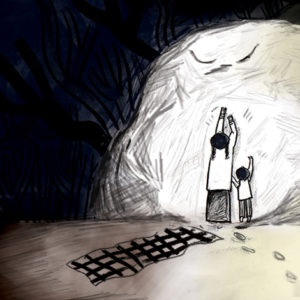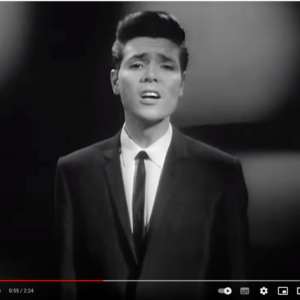For most women in our generation, if we were heard in the past, it was within limits. More often than not, our generation of women let others do the talking. We worked hard behind the scenes, and consciously or unconsciously, allow others to have the voice.
Now we are free. To be who we are. For ourselves, and for the people who are important to us. It’s time we are heard. One way is to tell our stories.
Humans have been telling stories since we lived in caves. It is how we get others to know us and experience what we experience. Storytelling is in our DNA. We have an innate ability to tell stories. Here are five ways to revive it.
#1: Believe You Have A Story To Tell
If you don’t think you have a story, or your story is not important, or that no one would care to hear it—stop! You have a lifetime of stories. You are an expert in your own life, and you have something to share. Your story can bring a smile or a thought from back when, it can tell us something about who we are, where we’ve come from, and what matters. Your most impactful stories are the ordinary ones. They are the stories women will relate to. When women hear your story, they might think—that happened to me, I am not alone.
#2. Organize Your Story
It’s true that events in your life may seem random and unconnected. From a story point of view, however, it’s better to have a beginning, a middle, and an end. Think about how events are part of a journey toward making the person you are today. Sharing your stories can help you identify events. It also helps you remember details.
You are the author of your life. You have a lifetime of stories. Organize them in the way you see fit and that makes sense to you.
In Dixie’s story, her landlord butchered a pig (beginning). Her son was curious and wished to witness, while her daughter ran in the opposite direction (middle). She acknowledges the family’s adventure through this experience (end).
Mireya’s story started when she broke up from a relationship (beginning). She went on a road trip alone (middle) and came face to face with herself, literally; bit the bullet, and moved on (end).
In my story, I started by sharing what a monster my father was when I was a child (beginning). How I learned to love him as an adult (middle), and how as I learned to love him, I remember moments of sweetness with him as a child (end).
#3. Don’t judge your stories
Give your memories and ideas a chance to live before you label them not interesting.
Remember #1, believe you have a story. If you judge your story, you’ll shut your voice. Explore. Wonder. Feel. Let your story come out and play. Your storytelling becomes better the more you share, and especially when you learn your why.
#4. Along the way, explore your why
In the third most-watched talk on Ted.com, Simon Sinek explains that it is not enough for organizations to know what they do and how they do it, they must know why. The most successful organizations know their why. (Other than to make a profit which Sinek says is a result rather than a cause)
Your why maybe to have fun, to try something new and see where it goes. To be heard. You may want your children to know about how you grew up. Or inspire women with your story of resilience; if you can do it, so can they. You may want to make us laugh and spread joy.
You may have a strong why buried inside you, or not. Exploring it and asking yourself what is meaningful to you, what brings you joy, or peace, or excitement; whatever you may seek; adds an exciting aspect to your storytelling, which can be invigorating. Know that your why can change. Exploring it strengthens your voice.
I started StorySistas in 2016 after I began writing a play about five best girlfriends who were turning 60. It was lonely work. In my almost twenty years in Austin then, I had not gone out and made friends beyond my immediate neighbors and the mothers of my children’s best friends. I shared a story at a gathering and loved the experience so much, I decided that more than anything, I wanted to gather with women my age and swap stories. My why was I did not want to feel alone making up bff’s in my head. I wanted to have girlfriends, lots of girlfriends.
As I started sharing stories, I felt a strong connection to the “me” in the stories. When I told a story of when I was fourteen during my brother’s circumcision, I began remembering details of fourteen-year-old me. I asked my siblings if they remembered the “event,” and we talked for hours. Each sibling had their own version of the story. Especially the brother who was circumcised! I reconnected with my siblings, Adek, Jo, and Anas. When I shared the story at a gathering, I connected with listeners. Family dysfunction is universal, even if circumcising nine-year old’s is not. I love the connection.
In telling a story, I see past events with dual perspectives, from the point of view of then, and now. When my mother asked me to care for her when I was three, my three-year-old self accepted the offer. Now at sixty-four, I know the burden was not for me to carry. After more than sixty years, I put down the load and feel lighter. The more I tell the story, the lighter I feel.
#5. See a past event with what you know today— with all the things that life has put into you— and tell that story
According to Dr. Sherry Hamby, a Research Professor of Psychology, “People who have found their voice, shared their story and reaffirmed their values often find a sense of peace and a hopefulness that they did not have before.
Did you date the bad boy in college? Did you marry him? Tell that story with what you know today—with all the things that life has put into you. How would you tell the story? Is it a funny story? Poignant? Inspiring? All three? How ever you choose to tell your story, let your voice be heard.




